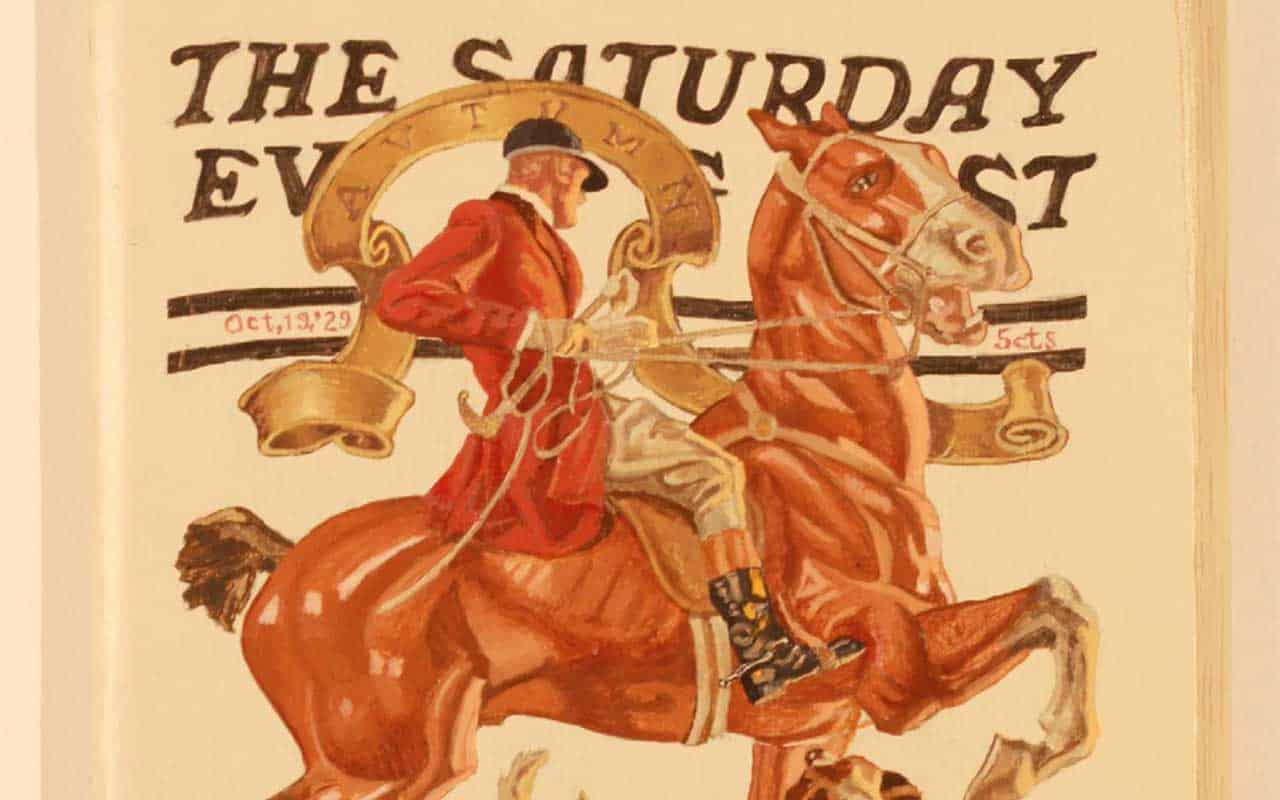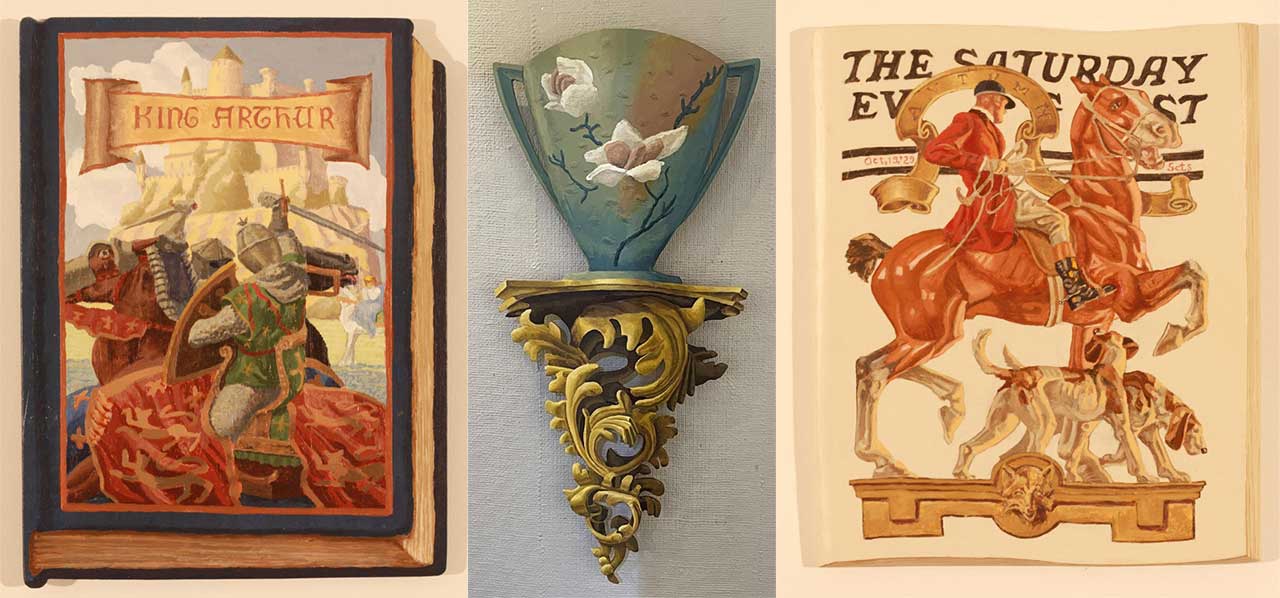Featured Artist

Surrounded by Imagination
There’s a certain inexplicability that comes with properly capturing a moment, scene or feeling. Perhaps that’s why the elusive action is so closely associated with the great artist. To funnel the world as it exists through the imagination, molded there into something that others connect with on a level even they cannot articulate.
That, perhaps, is what the phrase “art taking command” looks like. It’s a mantra which artist Carl Chaiet lives by.
Chaiet was born in Manhattan and raised in Mount Vernon, NY, where he could view the spires of the city’s skyline from his bedroom window. His imagination would transform this visage of architecture into the image of his own creativity. Soon bridges, trains, remnants of architecture from the 1930s, his grandmother’s china, and his father’s automobiles would make it onto Carl’s canvas as well as onto the pages of his children’s books. He would go on to work in a variety of mediums throughout the 1970s, 1980s and 1990s, primarily sculpting and painting while teaching art in both college and high schools, before teaming up with his wife, Lynn Kearcher, to create Telford and Earnest, the series of children’s books for which he is best known, and that captured the minds of vivid youngsters for decades. As he continues to move fluidly through his own imagination, Carl discusses his time growing up, his changing style and his current medium of cutouts.
Growing up around Manhattan, was there something about the architectural landscape that planted creative inspiration within you?
Growing up with easy access to New York City and the Bronx, with either a bicycle or subway, allowed for multiple adventures which saturated my imagination. Whether it was the Rainy Gates or Elephant house in the Bronx Zoo, the Haute Conservatory at the Botanical Gardens or the canyons of Manhattan and not least the magnificent ocean liners docked on the West Side, I stored all these impressions for later use – although at the time I simply marveled at them. The sheer scope of proportion and size of the city and its environs intrigued me and kindled a love of perspective and the visual foreplay it engenders. It is the use of perspective that is the main component in all of my work, whether it is the cutouts or drawings, as it allows me to manipulate space.
How did your artistic sensibility evolve or move fluidly over the course of your career? Does there ever come a point where style doesn’t change?
Early in my teaching career I noticed students would try to achieve a certain technique but would end up with a different but equally successful solution. This led to a discussion about El Greco in which I brought up the theory that El Greco had a stigmatism that caused him to see the world as he had painted it. I then asked the students if it was equally as valid if he just wanted to paint it that way. I realized intentionality is limiting. What the artist intends isn’t usually what results. The process of creation builds upon the artistic, cultural and familial history, as well as the ongoing process.
I create to see what I will create, because it’s usually as much a surprise to me at the end of the day as it was a question at the beginning. The question of artistic sensibility is difficult to answer as it evolves over a long period of time. The only constant has been my aversion to stagnation and the embracing of flux. I have alternated between black and white and color, representationalism and abstraction as a steady course and never the twain have met. Unless they did.
How would you describe the experience of creating Telford and Earnest from idea to publication? Did your experience with children’s stories shift any perspectives?
The Telford and Earnest stories began as a quick sketch and the first story was fleshed out in a subsequent night’s studio work. I recognized in the writing Earnest was drawn from my friend and the bird grew to be 6’3”. Ernest and I both loved word games so Telford became a lexicologist. The publishing was the result of books sold or paintings sold as all the books were self published.
Developing the Telford and Earnest stories was a way for me to meander about introducing wordplay as the vehicle of the story. (Telford after all is a lexicologist). Each story ends not with a moral or parable but rather with a joke; a rose by any other name; a word is just a word; the significance is usually insignificant; evolution isn’t all it’s cracked up to be.
Sad to say I didn’t research the process of writing children’s books for children as well as I researched the images. Case in point, Earnest doesn’t read as a point of honor as he doesn’t want to relive another’s experience when he can experience it himself. Not a good way to encourage children to read.
Could you describe the process behind your cutouts? Do you consider each style of your work to exist separately?
The cutouts began a show at the Sharon Historical Society called Take A Seat. I chose one of art history’s most famous chairs, which is depicted in Vincent Van Gogh’s painting Bedroom at Arles. I wanted to make it stand alone, thus the cutout. Van Gogh did a portrait of the chair and a companion piece for Paul Gauguin when he came to visit. I did likewise.
While painting in my studio I inadvertently almost sat down on one of the cutout chairs. I realized the presentation of the chairs should be ideally as low on the wall as possible. This led me to think of presentations on walls and what is usually found on walls. Wall lamps begat hurricane lamps which begat coat racks which begged the question of whose coat. Superman begat Sherlock, who begat Captain America.
For my first show I did a cutout of a guest book complete with a cutout pencil for guests not to sign. From there books and magazines from the golden age of illustration ensued. Currently I am working on a series of vases on wall sconces.
To learn more about Carl Chaiet and his work, please visit www.carlchaiet.com. All images with this article are courtesy of Carl Chaiet.
Are you an artist and interested in being featured in Main Street Magazine? Send a brief bio, artist’s statement, and a link to your work through the arts form on our “arts” page on our website.

